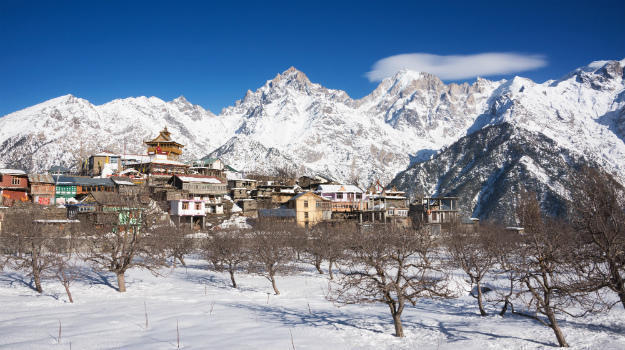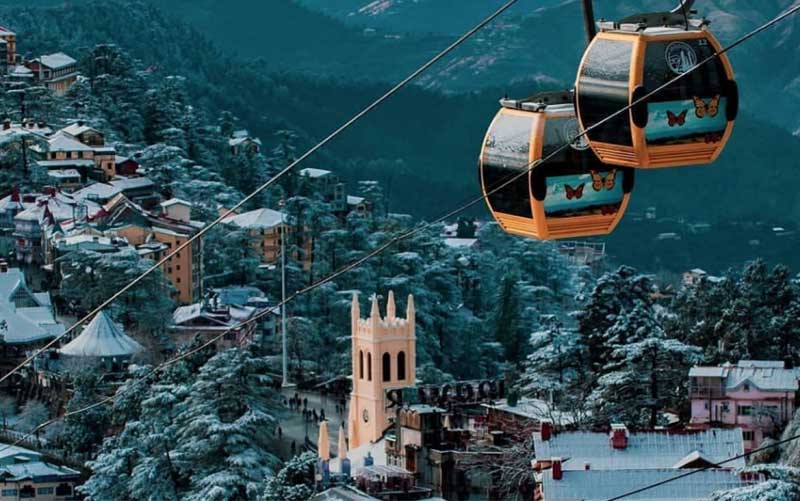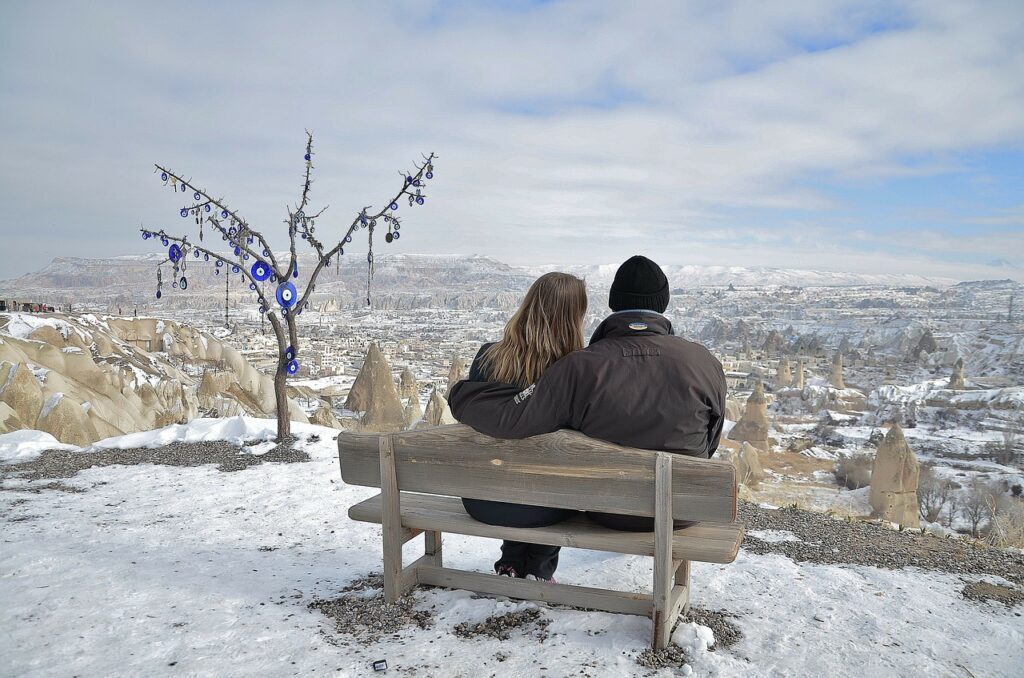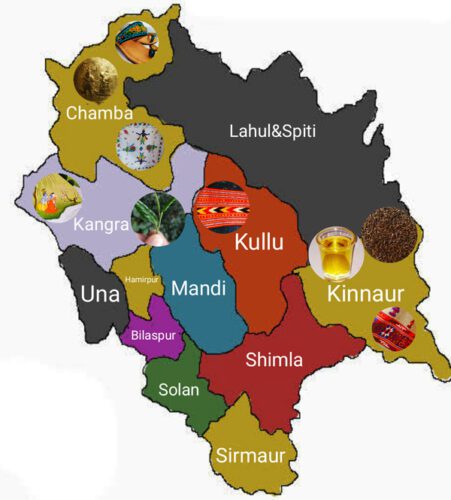7 Most Famous Heritage Sites In Rajasthan To Witness Rich Culture
1. Kumbalgarh Fort
The Amber Fort, located in Amer, Jaipur, Rajasthan, stands as a magnificent symbol of Rajputana culture and architectural grandeur. Here are some key highlights and details about this iconic heritage site:
-
Historical Significance: Built in 1592 by Raja Man Singh I, a trusted general of Emperor Akbar, the Amber Fort showcases the rich history and valor of the Rajput rulers. The fort’s construction using red sandstone and marble reflects the opulence and craftsmanship of that era.
-
Sheesh Mahal: One of the main attractions within the Amber Fort is the ‘Sheesh Mahal’ or Mirror Palace, known for its intricate mirror work that creates a dazzling effect when light falls on it. The sparkling visuals of the Sheesh Mahal captivate visitors and offer a glimpse into the artistic brilliance of Rajput architecture.
-
Elephant Rides: Visitors to the Amber Fort have the opportunity to enjoy traditional elephant rides, adding a touch of royal splendor to their experience. The majestic elephants and the grandeur of the fort create a memorable and regal ambiance for tourists.
-
Exploration: The Amber Fort’s vast corridors, courtyards, and palaces invite visitors to immerse themselves in the bygone era of Rajputana culture, romance, and bravery. The fort’s architecture, design elements, and historical significance make it a must-visit destination for history enthusiasts and culture aficionados.
-
Practical Information:
- Location: Devisinghpura, Amer, Jaipur, Rajasthan 302001
- Best Time to Visit: November to January, when the weather is pleasant for exploring the fort and its surroundings.
- Entry Fee: ₹25/- per person for Indians and ₹550/- per person for foreigners, offering access to the heritage site and its attractions.
Visiting the Amber Fort in Jaipur promises a journey through Rajasthan’s royal past, where visitors can witness the grandeur, beauty, and cultural heritage of the Rajputana era. Whether you are captivated by history, architecture, or simply seeking a glimpse into India’s regal legacy, the Amber Fort is a destination that offers a truly immersive and enriching experience.
2. Jaisalmer Fort
The Jaisalmer Fort, also known as Sonar Kila or the Golden Fort, stands as a remarkable testament to Rajasthani architecture and heritage. Here are some key details and highlights about this iconic fort:
-
Historical Significance: Established in 1156 by King Rawal Jaisal, the Jaisalmer Fort is renowned for its golden sandstone construction and intricate engravings that depict the grandeur of Rajput royalty. The fort’s golden hue and mesmerizing illumination under the sun have earned it the nickname “Golden Fort.”
-
UNESCO World Heritage Site: Recognized as one of the ‘Hill Forts of Rajasthan,’ the Jaisalmer Fort holds UNESCO World Heritage status, highlighting its cultural and historical significance. The fort’s architectural splendor, vibrant bazaars, puppet shows, and Jain temples contribute to its status as a top heritage site in Rajasthan.
-
Attractions: Within the Jaisalmer Fort, visitors can explore vibrant bazaars offering traditional handicrafts, enjoy captivating puppet shows that showcase local folklore, and visit exquisite Jain temples known for their intricate carvings and spiritual ambiance. The fort’s blend of cultural experiences and architectural marvels makes it a must-visit destination for travelers worldwide.
-
Practical Information:
- Location: Khejer Para, Manak Chowk, Amar Sagar Pol, Jaisalmer, Rajasthan 345001
- Best Time to Visit: October to March, when the weather is pleasant for exploring the fort and enjoying the attractions within its walls.
- Entry Fee: ₹50/- per person for Indians and ₹250/- per person for foreigners, granting access to the heritage site and its various points of interest.
Visiting the Jaisalmer Fort offers a journey back in time to the era of Rajputana royalty, where visitors can immerse themselves in the rich history, culture, and architectural beauty of Rajasthan. Whether you are drawn to historical sites, cultural experiences, or architectural wonders, the Golden Fort of Jaisalmer promises a captivating and unforgettable exploration of India’s royal heritage.
3. Ranthambore Fort
The Ranthambore Fort, located at the heart of Ranthambore National Park in Rajasthan, is a captivating blend of cultural heritage and natural beauty. Here are some key details and highlights about this historic fort:
-
Historical Significance: Built during Sapaldaksha’s reign in the mid-10th century, the Ranthambore Fort has a rich history that includes being seized by Muhammad of Ghor in 1192 and later controlled by the Kachwaha Maharajas until India’s independence. The fort’s historical legacy and strategic importance add to its allure.
-
Cultural and Natural Blend: The Ranthambore Fort offers visitors a unique experience by combining wildlife sightings from within the national park with the exploration of Hindu and Jain temples within the fort premises. This harmonious blend of cultural heritage and natural beauty creates a memorable and enriching visit for tourists.
-
Scenic Views: Perched atop a hill, the Ranthambore Fort provides stunning panoramic views of the surrounding landscape, making it a prime destination for nature lovers, photographers, and history enthusiasts. The fort’s hilltop location offers a vantage point to appreciate the beauty of the national park and its diverse wildlife.
-
Practical Information:
- Location: 2, Ranthambhor Road, Vigyan Nagar, Sawai Madhopur, Ranthambhore Fort, Rajasthan 322001
- Best Time to Visit: October to March, when the weather is pleasant for exploring the fort and enjoying the natural surroundings.
- Entry Fee: ₹15/- per person for Indians and ₹550/- per person for foreigners, granting access to the fort and its historical and cultural attractions.
Visiting the Ranthambore Fort offers a unique opportunity to immerse oneself in Rajasthan’s history, culture, and natural beauty. Whether you are interested in exploring ancient temples, observing wildlife, or admiring scenic views, the fort provides a memorable experience that showcases the rich heritage and biodiversity of the region.
4. Jantar Mantar
The Jantar Mantar in Jaipur stands as a UNESCO-recognized heritage site, showcasing the remarkable astronomical instruments built by Maharaja Jai Singh II. Here are some key details and highlights about this unique architectural collection:
-
Historical Significance: Constructed by Maharaja Jai Singh II, the Jantar Mantar features nineteen instruments designed to measure time, track celestial bodies, and predict astronomical events like eclipses. This architectural marvel reflects India’s rich scientific heritage and the advancements made in astronomy during ancient times.
-
World’s Largest Sundial: The Jantar Mantar in Jaipur is home to the world’s largest sundial, a fascinating instrument that accurately measures time based on the position of the sun. This impressive sundial is a testament to the precision and ingenuity of ancient Indian astronomers.
-
Visitor Experience: Visitors to the Jantar Mantar can explore the various astronomical instruments, learn about their functions, and appreciate the blend of science and history that the site offers. Astronomy enthusiasts, history buffs, and curious travelers can delve into India’s astronomical legacy and cultural heritage at this must-visit heritage site in Rajasthan.
-
Practical Information:
- Location: Gangori Bazaar, J.D.A. Market, Pink City, Jaipur, Rajasthan 302002
- Best Time to Visit: October to March, when the weather is pleasant for exploring the site and learning about its astronomical significance.
- Entry Fee: ₹50/- per person for Indians and ₹200/- per person for foreigners, providing access to the Jantar Mantar and its intriguing collection of astronomical instruments.
Visiting the Jantar Mantar in Jaipur offers a unique opportunity to delve into the scientific achievements and cultural heritage of ancient India. Whether you have a passion for astronomy, history, or simply enjoy exploring architectural wonders, the Jantar Mantar provides a captivating experience that showcases the ingenuity and knowledge of India’s astronomers from centuries past.
5. Chittorgarh Fort
The Chittorgarh Fort, located on a hilltop in Chittorgarh, Rajasthan, stands as a symbol of Rajput valor, sacrifice, and honor, particularly associated with the legendary Rajput Rani Padmavati. Here are some key details and highlights about this historic fort:
-
Historical Significance: The Chittorgarh Fort is renowned for its association with the bravery and sacrifice of Rajput warriors, including Rani Padmavati. Spanning over 700 acres, it is the largest fort by area in Rajasthan and serves as a testament to the valor and resilience of the Rajput community.
-
Architectural Marvel: The fort’s majestic structures and intricate architecture showcase the rich heritage and storied past of Chittorgarh. Visitors are captivated by the visual tales depicted through the fort’s design, reflecting the grandeur and historical significance of this iconic monument.
-
Cultural Heritage: As a living monument to Rajasthan’s cultural heritage, the Chittorgarh Fort attracts travelers from around the world with its timeless beauty and historical legacy. Exploring the fort allows visitors to immerse themselves in Rajasthan’s rich history, experience its architectural splendor, and appreciate the legacy of the Rajput rulers.
-
Practical Information:
- Location: Chittorgarh, Rajasthan 312001
- Best Time to Visit: The winter season from October to March is recommended for visiting the fort, as the weather is pleasant for exploring the expansive grounds and historical structures.
- Ticket Price: ₹50/- per person for Indians and ₹200/- per person for foreigners, providing access to the Chittorgarh Fort and its historical treasures.
Visiting the Chittorgarh Fort offers a profound journey into Rajasthan’s rich history, where visitors can witness the valor, sacrifice, and cultural heritage of the Rajputana era. Whether you are drawn to architectural marvels, historical narratives, or panoramic views of the surrounding landscape, the Chittorgarh Fort stands as a must-visit heritage site that encapsulates the essence of Rajasthan’s royal legacy.
6. Jaipur City Palace
The City Palace in Rajasthan, located in Jaipur, is a splendid architectural marvel that beautifully blends Mughal, Rajput, and European styles, reflecting the region’s rich cultural heritage. Here are some key details and highlights about this iconic palace:
-
Architectural Fusion: The City Palace showcases a harmonious fusion of Mughal, Rajput, and European architectural elements, creating a unique and captivating aesthetic. Divided into the ‘Chandra Mahal’ and ‘Mubarak Mahal,’ the palace served as the residential quarters of the Rajput rulers, offering a glimpse into their opulent lifestyle.
-
Exquisite Craftsmanship: Visitors to the City Palace are greeted by a series of courtyards, gardens, and pavilions adorned with exquisite craftsmanship and intricate designs. The ‘Peacock Gate’ is a standout feature, known for its vibrant colors and detailed artwork, symbolizing the rich artistic heritage of Rajasthan.
-
Cultural Experience: The City Palace immerses tourists in the grandeur and elegance of the Rajput era, transporting them back in time to experience the splendor of ancient Indian culture and artistry. Each corner of the palace tells a story of royalty, tradition, and craftsmanship, making it a must-visit heritage site in Rajasthan.
-
Practical Information:
- Location: Gangori Bazaar, J.D.A. Market, Pink City, Jaipur, Rajasthan 302002
- Best Time to Visit: October to February is recommended for visiting the City Palace, as the weather is pleasant for exploring the palace complex and its various attractions.
- Ticket Price: ₹200/- per person for Indians and ₹700/- per person for foreigners, granting access to the City Palace and its architectural wonders.
Visiting the City Palace in Jaipur offers a sensory journey through the cultural tapestry of Rajasthan, where visitors can marvel at the architectural beauty, intricate designs, and historical significance of this iconic landmark. Whether you are an art enthusiast, history buff, or simply appreciate fine craftsmanship, the City Palace promises a memorable experience that celebrates the grandeur and heritage of Rajasthan.
7. Hawa Mahal
The Hawa Mahal in Jaipur is a remarkable five-story structure designed to facilitate constant airflow, serving as a cool retreat for Rajput queens. Here are some key details and highlights about this iconic palace:
-
Architectural Marvel: The Hawa Mahal, with its 953 intricately designed “Jharokhas” or windows, was constructed to provide ventilation and shade for the Rajput queens, allowing them to observe street festivals and daily life without being seen. The palace’s unique design and pink sandstone facade make it a standout architectural gem in Jaipur.
-
Symbol of Freedom and Peace: The Hawa Mahal symbolizes the freedom and tranquility of ancient India, offering a serene and peaceful retreat amidst the bustling city. Its design not only served practical purposes but also embodied the essence of Rajputana architecture and lifestyle, making it a significant cultural landmark.
-
Evening Glow: As the sun sets, the Hawa Mahal casts a warm glow on its pink sandstone facade, creating a magical and serene atmosphere. Visitors can witness this enchanting sight and experience the palace’s tranquil beauty during the evening hours, adding to the allure of this historical monument.
-
Practical Information:
- Location: Hawa Mahal Rd, Badi Choupad, J.D.A. Market, Pink City, Jaipur, Rajasthan 302002
- Best Time to Visit: The Hawa Mahal can be visited at any time of the year, offering a unique experience in every season. However, the evening hours may provide a particularly enchanting view of the palace as the sun sets.
- Ticket Price: ₹130/- per person for Indians and ₹500/- per person for foreigners, granting access to explore the Hawa Mahal and appreciate its architectural and historical significance.
Visiting the Hawa Mahal in Jaipur promises a memorable experience, where visitors can admire the architectural ingenuity, historical significance, and tranquil beauty of this iconic palace. Whether you are drawn to unique architectural designs, cultural landmarks, or serene atmospheres, the Hawa Mahal stands as a must-visit heritage site in Rajasthan that encapsulates the charm and elegance of Rajputana architecture.














